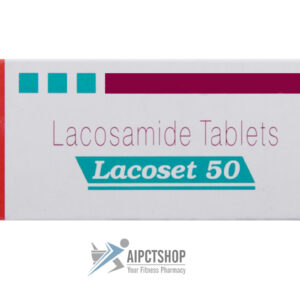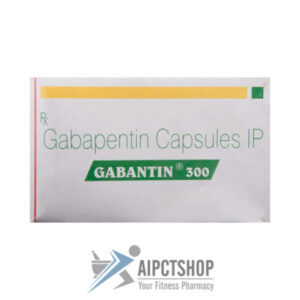What is this drug used for?
– It is used to treat seizures.
– It is used to prevent migraine headaches.
– It may be given to you for other reasons. Talk with the doctor.
Frequently reported side effects of this drug
– Nausea
– Weight loss
– Change in taste
– Diarrhea
– Anxiety
– Fatigue
– Loss of strength and energy
– Common cold symptoms
– Joint pain
– Headache
– Dry mouth
– Flushing
– Hair loss
Other side effects of this drug: Talk with your doctor right away if you have any of these signs of:
– Infection
– Acidosis like confusion, fast breathing, fast heartbeat, abnormal heartbeat, severe abdominal pain, nausea, vomiting, fatigue, shortness of breath, or loss of strength and energy.
– Depression like thoughts of suicide, anxiety, emotional instability, or confusion.
– High ammonia levels like abnormal heartbeat, abnormal breathing, confusion, pale skin, slow heartbeat, seizures, sweating, vomiting, or twitching.
– Liver problems like dark urine, fatigue, lack of appetite, nausea, abdominal pain, light-colored stools, vomiting, or yellow skin.
– Bleeding like vomiting blood or vomit that looks like coffee grounds; coughing up blood; blood in the urine; black, red, or tarry stools; bleeding from the gums; abnormal vaginal bleeding; bruises without a reason or that get bigger; or any severe or persistent bleeding.
– Kidney stone like back pain, abdominal pain, or blood in the urine.
– Confusion
– Difficulty focusing
– Change in balance
– Severe dizziness
– Passing out
– Inability to eat
– Unable to pass urine
– Seizures
– Burning or numbness feeling
– Bone pain
– Chest pain
– Trouble with memory
– Muscle pain
– Muscle weakness
– Difficulty speaking
– Trouble sleeping
– Tremors
– Abnormal gait
– Involuntary eye movements
– Agitation
– Irritability
– Panic attacks
– Mood changes
– Blurred vision
– Eye redness
– Vision changes
– Eye pain
– Eye irritation
– Signs of a significant reaction like wheezing; chest tightness; fever; itching; bad cough; blue skin color; seizures; or swelling of face, lips, tongue, or throat.
Note:?This is not a comprehensive list of all side effects. Talk to your doctor if you have questions.
Pronunciation
(toe PYRE a mate)
Medication Safety Issues
Sound-alike/look-alike issues:
Topamax may be confused with Sporanox, TEGretol, TEGretol-XR, Toprol-XL
Administration issues
Bioequivalence has not been demonstrated between Trokendi XR and Qudexy XR.
Qudexy XR capsules may be swallowed whole or opened to sprinkle the entire contents on a small amount (~1 teaspoon) of soft food. Do not open and sprinkle Trokendi XR capsules on food, chew, or crush; doing so may disrupt the triphasic release properties.
Avoid alcohol use with Trokendi XR within 6 hours prior to and 6 hours after administration; concurrent use may result in dose dumping.
Storage and Stability
Extended release capsules: Store at 15?C to 30?C (59?F to 86?F). Protect from moisture. Protect from light.
Sprinkle capsules: Store at or below 25?C (77?F). Protect from moisture.
Tablets: Store at 15?C to 30?C (59?F to 86?F). Protect from moisture.
Adverse Reactions
Adverse events are reported for adult and pediatric patients for various indications and regimens. A wide range of dosages were studied. Incidence of adverse events was frequently lower in the pediatric population studied.
Cardiovascular: Chest pain (adults), flushing (children and adolescents), hypotension, orthostatic hypotension, syncope
Central nervous system: Agitation (adolescents and adults), anxiety (adolescents and adults), ataxia (adolescents and adults), behavioral problems (children and adolescents), cognitive dysfunction, confusion, depression, disturbance in attention, dizziness (adolescents and adults), drowsiness (adolescents and adults), exacerbation of depression (adolescents and adults), fatigue, headache (children and adolescents), hypertonia (adults), hypoesthesia (adolescents and adults), insomnia (adolescents and adults), lack of concentration, memory impairment, mood disorder, nervousness (adolescents and adults), paresthesia (more common in adolescents and adults), psychomotor impairment (adolescents and adults), speech disturbance (adolescents and adults), suicidal ideation, suicidal tendencies, vertigo (children and adolescents)
Dermatologic: Acne vulgaris (adults), alopecia, pruritus (adolescents and adults), skin rash
Endocrine & metabolic: Decreased serum bicarbonate (more common in adolescents and adults), hyperammonemia (adolescents), hyperchloremia, increased gamma-glutamyl transferase (adults), increased serum total protein, increased thirst (adolescents and adults), increased uric acid, intermenstrual bleeding (children and adolescents), menstrual disease (adolescents and adults), weight loss
Gastrointestinal: Abdominal pain (adolescents and adults), ageusia (adolescents and adults), anorexia (adolescents and adults), constipation (adolescents and adults), diarrhea, dysgeusia (adolescents and adults), dyspepsia (adolescents and adults), gastroenteritis (adolescents and adults), gastritis (adults), gastroesophageal reflux disease (adults), gingival hemorrhage, hematuria, nausea (adolescents and adults), xerostomia (adolescents and adults)
Genitourinary: Cystitis (adults), decreased libido (adults), dysuria (adults), premature ejaculation (adolescents and adults), urinary frequency, urinary incontinence (children and adolescents), urinary tract infection (adolescents and adults), vaginal hemorrhage (adults)
Hematologic & oncologic: Abnormal serum phosphorus level (decreased), anemia (children and adolescents), decreased neutrophils, decreased white blood cell count, eosinophilia, hemorrhage, neoplasm (adolescents and adults), quantitative disorders of platelets (increased)
Hepatic: Increased serum alkaline phosphatase
Hypersensitivity: Hypersensitivity reaction (adolescents and adults)
Infection: Infection, viral infection
Neuromuscular & skeletal: Arthralgia (adolescents and adults), asthenia, lower extremity pain (adolescents and adults), muscle spasm, myalgia
Ophthalmic: Blurred vision (adolescents and adults), conjunctivitis (adolescents and adults), myopia, scotoma, visual disturbance (adolescents and adults), visual field defect
Otic: Otitis media (adolescents and adults)
Renal: Increased blood urea nitrogen, increased serum creatinine, nephrolithiasis (adolescents and adults)
Respiratory: Bronchitis, cough (adolescents and adults), dyspnea (adolescents and adults), epistaxis (children and adolescents), pharyngitis (adolescents and adults), rhinitis, sinusitis, upper respiratory tract infection
Miscellaneous: Accidental injury (adolescents and adults), fever, language problems (adolescents and adults)
Rare but important or life-threatening: Acute myopia with secondary angle-closure glaucoma, bullous rash, calcium nephrolithiasis, erythema multiforme, hepatic failure, hepatitis, hyperammonemic encephalopathy, hyperchloremic metabolic acidosis (nonanion gap), hyperthermia, hypohidrosis, maculopathy, major hemorrhage (children), pancreatitis, pemphigus, Stevens-Johnson syndrome, toxic epidermal necrolysis









Reviews
There are no reviews yet